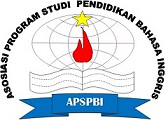BEST PRACTICE: A VIDEO MEDIATED TEACHING OF PHONOLOGY
Abstract
Abstract: A narrative inquiry as the approach of qualitative research is conducted in this research to know how the implementation of a video as a teaching media of Phonology and what the problems that the students face in using a video as the learning media of Phonology. This research involves 28 students of the second grade. The subject of research is the students of an English department in Education of UNISKA Kediri. The result is that there are four categorized problems that students face. Students felt that; (1) a native speaker in the video speaks too fast; (2) the pronunciation is unclear; (3) there are some new words or terms; (4) it is difficult to imitate the intonation and stressing of a word and sentence. However, the students can solve problems. Besides that, they get some advantages their ability in some aspects and are aware of the current issue; (1) the first is that the video is easy accessible; (2) the second one is that the video also is appropriate with the current issue so the students, beside learn about phonology, also aware of the current issue; (3) the other one is the students can learn and practice whenever with (out) the guidance of the lecturer; (4) the last advantage that we can offer is the students can listen the native speaker easily because they can play back the video when they cannot catch the word or meaning.
Keywords
Full Text:
PDFReferences
Budiman, A. (2017). Behaviorism and Foreign Language Teaching Methodology. Bengkulu: English Franca.
Carson, L. (2004). Relatedness and learner autonomy: A case study of an adult refugee learning in English in Ireland. Dublin: Trinity’s Access to Research Achieve.
Corder, P.S. (1968). Advanced Study and the Experienced Teacher. Cambridge: Cambridge University Press.
Cresswell, J. W. (2003). Research Design: Qualitative, Quantitative and Mixed Methods Approaches. Sage Publication: Thousand Oaks.
Crystal, D. (1997). The Cambridge encyclopedia of the English language. Cambridge: Cambridge University Press.
Dawson, Hope C. and Phelan, Michel (ed.) (2016) Language Files 12ed. Columbus: The Ohio University Press.
Elҫi, Alev and Devran, Ҫubukҫuoǧlu. 2014. A Narrative Research Approach: The Experiences of Social Media Support in Higher Education. P. Zaphiris (Eds.): Human-Computer Interaction, Part I. 36-42.
Fauziati, E. (2016). Applied Linguistics: Principles of Foreign Language Teaching, Learning, and Researching. Surakarta: Era Pustaka Utama.
Handayani, Dyah Indri Fitri. 2017. Teaching English Pronunciation Using Film. Journal of English and Educatio,.Vol 5 No 2. 194-201.
Kanno, Yasuko and Varghese, Manka M. 2010. 'Immigrant and Refugee ESL Students' Challenges to Accessing Four-Year College Education: From Language Policy to Educational Policy', Journal of Language, Identity & Education.
Kentjono, Joko. (1990). Dasar-Dasar Linguistik Umum. Jakarta: Fakultas Sastra Universitas Indonesia.
Kumaravadivelu, B. (2006) Understanding Language Teaching: from Method to Postmethod. New Jersey: Lawrence Erlbaum Associates Publishers.
Kurniasih. (2011) Teaching the Four Language Skills in Primary EFL Classroom: Some Considerations. Jakarta: Journal of English Teaching.
Lanteigne, B. (2006). Common, Persistent Errors in English by Brazilian Portuguese Speakers. Lithuania: TEFL Web Journal.
Lauder, A. (2008). The Status and Function of English in Indonesia: A Review of Key Factors. Depok: Department of Linguistics, FIB, University of Indonesia.
Matsuda, S. (2004). A Longitudinal Diary Study on Orientations of University EFL Learners in Japan. Kyoto: Doshisa Studies in Language and Culture.
Mellisa, M., & Yanda, Y. D. (2019). Developing Audio-visual Learning Media Based on Video Documentary on Tissue Culture Explant of Dendrobium Bigibbum. Malang: Jurnal Pendidikan Biologi Indonesia.
Odden, D. (2006). Introducing Phonology. Cambridge: Cambridge University Press.
Pargente, R. (2015). Reflections of Students on Their English Language Learning Experiences. Misamis Oriental: Misamis Oriental State College of Agriculture and Technology.
Putri, R. G., Titin, T., & Santoso, R. (2019). Film Dokumenter Pemanfaatan Tumbuhan Berkhasiat Obat sebagai Media Pembelajaran Materi Sistem Pencernaan. Banda Aceh: Indonesian Journal of Science Education.
Pyrkova, Kseniya V., and Ryabova, Tatyana. 2016. Imitation Methods in Teaching Decision-Making to Students of Medical Faculties. IEJME-Mathematic Education, Vol. 11 No 4. 539-548.
Ramelan. (2003). English Phonetics. Semarang: UNNES Press.
Shabarinath, C., & Dasaradhi, K. (n.d.). Importance of Linguistics in English Language. Nagpur: International Journal of English Languages, Literatures and Humanities.
Simatupang, M. (1999). Bahasa Inggris: Variasi Yang Mana? Suatu Tinjauan Ulang Tentang Status Bahasa Inggris di Indonesia. Jakarta: Pusat Kajian dan Budaya Unika Atma Jaya.
Skinner, B. F. (1976). About Behaviorism. New York: Vintage Books.
Tiono, N. I., & Yosta, A. M. (2008). A Study Of English Phonological Errors Produced By English Department Students. Surabaya: k@ta.
Wilkins, D.A. (1972). Linguistics in Language Teaching. London: Edward Arnold.
University of Sheffield (2012) Why Study Phonology? Retrieved from: https://sites.google.com/a/sheffield.ac.uk/aal2013/branches/phonology/why-study-phonology.
DOI: http://dx.doi.org/10.20527/jetall.v4i2.8915
Article Metrics
Abstract view : 583 timesPDF - 279 times
Refbacks
- There are currently no refbacks.
This journal is indexed in:


This Journal is listed in:
 Journal of English Teaching, Applied Linguistics and Literatures (JETALL)
Journal of English Teaching, Applied Linguistics and Literatures (JETALL)








.png)



1.png)
